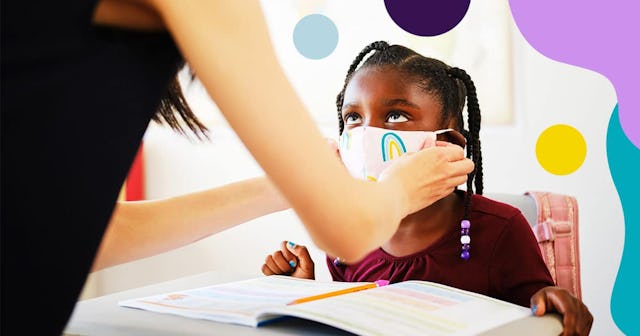Why 'Teacher Looping' Would Be Extremely Beneficial For Elementary Students

School re-opening has been on the top of nearly every parent’s mind for the last few weeks. Most students have been away from school since the early weeks of March, and most parents can agree that distance learning was difficult on the best of days and a complete and utter disaster during the worst of days.
Which is why we all want our kids back to school. We all want them back with their friends, and their routines, and their lives. But…the pandemic. It’s still here. COVID-19 is arguably more widespread and threatening more children than it did when schools initially closed.
The question of how to get kids back to school safely, and whether it’s even possible to return kids to school safely, remains unanswered. As a result, getting kids back with their friends, their routines, and their lives isn’t as simple as buying school supplies and throwing open the doors come September.
School districts around the country are exploring endless models to attempt to figure out how to keep students, teachers, and the overall community safe. The possibilities run the gamut of full day, full week in-person lessons to all remote instruction. No one has yet found a solution that will provide students the safety, learning, engagement, and socialization they need (not to mention that the teachers and administrators who work in the school need.) Save for a magic bullet vaccine, likely no one will.
But one option that may provide benefits for elementary school students is teacher looping.
Teacher looping is when a teacher moves up a grade level with their current class and continues to teach that same group of children. Allowing kids to have the same teacher as the year before could minimize some of the concerns and issues that both parents and teachers have with our new normal.
The benefits of teacher looping are proven. The School Superintendents Association found schools that have implemented looping have “improved relationships among students and between teachers and students, more efficient instruction, higher attendance rates, reduced student retentions, fewer referrals of students to special education programs and improved student discipline.” But, “[p]erhaps the most important reason for deciding to keep students and teachers together for a second year is to continue the relationship built during the first year.”
Relationships have proven to be essential to a student’s success in schools. A 2018 analysis of North Carolina elementary school data found that students made small, but significant test score gains when they were assigned the same teacher for a second year in a row.
gorodenkoff/Getty
Even more than the quantifiable effects of looping, of keeping relationships intact, are the unquantifiable benefits. The school year ended so abruptly that children never had a chance to say goodbye, to their teachers or each other. Looping would give them that chance to have the closure they never received in the spring of 2020. Looping also allows teachers and children to begin the school year with a head start. Not only does the teacher already know exactly where the class is—likely what needs to be reviewed and what the class had mastered the year before—and therefore doesn’t need to spend time assessing skills, but also there’s an element of coherence and community built into the class, which seems crucial, particularly now when in person interaction is necessarily limited.
Building relationships at the start of the school year is challenging. Doing so over Zoom is even more so. Looping would almost certainly smooth out some of the bumps schools will come across if implementing distance learning. Rather than a new teacher trying to form a relationship with twenty or so new students over Zoom, a teacher with an established repertoire will be reinforcing relationships built over the past year.
In an interview with KQED, Principal Jeff Gilbert reinforced that idea and said, “Even if it’s distance learning they’ll be able to get into a space where they are very comfortable with each other and they can talk.”
There are some drawbacks. Namely, it’s already August. Some parts of the country are going back to school within a few weeks. The rest of the country will follow not long after. Learning, drawing up, and preparing to teach an entirely new curriculum is challenging and time intensive–and teachers are already working hours of unpaid overtime. It’s more than a matter of snagging a lesson plan from the teacher before you. It’s also learning how to pace the material and what supplemental materials work for your teaching style. Also, if a particular teacher and student relationship is full of friction, which isn’t a comment on teachers or students, and merely the truth about two conflicting personalities, then looping for that child would problematic.
At the end of this past school year, my daughter’s fourth grade teacher announced that she was potentially moving up to fifth grade with the class. My daughter has been anxiously awaiting confirmation of this news since that rumor hit her ears. And I have been, too.
I don’t know what the school year will look like. I don’t know how distance learning or a hybrid model of school will look. But I know it’ll be smoother if when my daughter logs onto her first Zoom, she sees a familiar face. I know it’ll be easier to begin that first assignment if she knows exactly what the teacher expects. I know it’ll take some of the uncertainty and unpredictably of a new school year away, during a time when we could all use a little more certainty and stability.
This article was originally published on